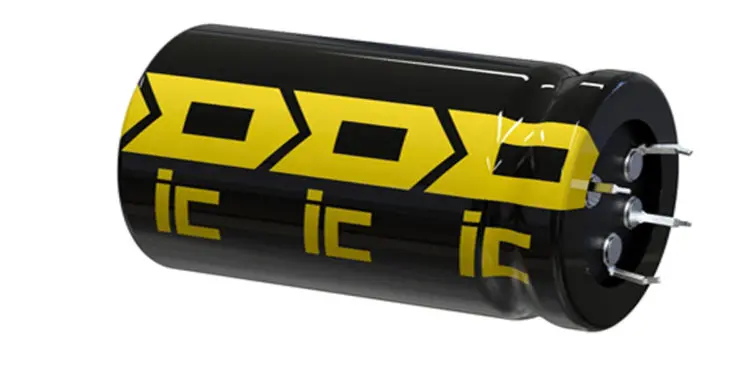CDE’s Illinois Capacitor brand DGH Series of supercapacitors has been its most popular to date, with a winning combination of low ESR and low cost. Now, the line has been expanded, with capacitance values up to 600 Farads.
The DGH Series includes 24 different value/voltage combinations, ranging in capacitance from 0.5F (Farad) to 600F, with voltage ratings from 2.7 to 5.5WVDC. Operating temperature range of -40 ºC to 65 ºC at maximum WVDC, or from -40 ºC to 85 ºC at 2.3 volts. Multiple devices can be banked in parallel or series for even higher voltage or capacitance.
Because of their massive energy storage, DGH supercaps can discharge instantaneous bursts of power to smooth power interruptions, supplement batteries, or even be used in place of batteries in certain applications.
Unlike batteries, DGH supercaps do not degrade with each cycle. At 2.7 volts, operating life is rated at 10 years with 500,000 charge/discharge cycles. Applications for these supercapacitors include: energy harvesting, IoT systems, mechanical actuators, transportation power, smart electric meters, pulse battery pack alternatives, memory backup, battery/capacitor hybrids, UPS systems, emergency lighting, LED power, solar lighting and many other devices requiring maximum energy storage in a minimum of space.
Radial, two-pin snap-in, four-pin snap-in, and dual pack configurations in the series are available, depending on voltage and capacitance combinations. Likewise, case diameters and configurations vary, depending on values. Parts are also fully RoHS compliant. The DGH Series is available from stock at major distributors. Custom modules, with active or passive balancing, are also available, to meet higher voltage or capacitance requirements.
Highlights
- Very Fast Charge/Discharge
- High Power Density
- Lower ESR
- RoHS Compliant
Applications
- Battery Backup/Alternative
- Pulse Power
- Energy Harvesting
- LED Displays
- Mechanical Actuators
- Audio Systems
































